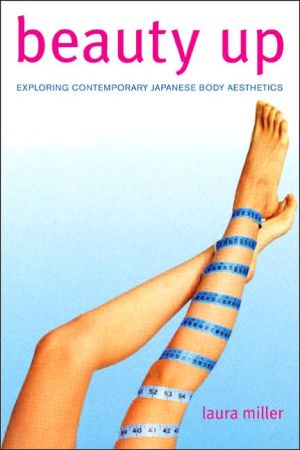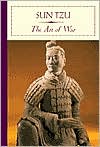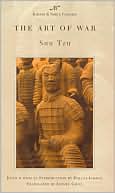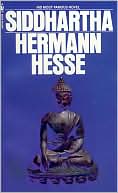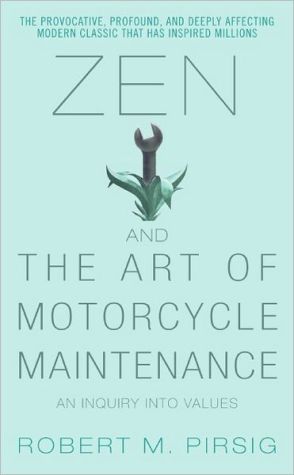Beauty Up: Exploring Contemporary Japanese Body Aesthetics
This engaging introduction to Japan's burgeoning beauty culture investigates a wide range of phenomenon—aesthetic salons, dieting products, male beauty activities, and beauty language—to find out why Japanese women and men are paying so much attention to their bodies. Laura Miller uses social science and popular culture sources to connect breast enhancements, eyelid surgery, body hair removal, nipple bleaching, and other beauty work to larger issues of gender ideology, the...
Search in google:
"This is a very well researched, thoughtful, and engagingly written study of some of the hottest areas of Japan's beauty industry. Always careful to avoid easy generalizations or clichés about Japanese culture, Miller shows both the diversity of Japanese beauty practices and perceptions, and their dramatic shifts in recent years. Her critical yet sensitive descriptions of Japan's consumers and her critiques of Euro-American understandings about them will leave the reader reflecting as much about the 'West' as about Japan."—Takashi Fujitani, author of Splendid Monarchy: Power and Pageantry in Modern Japan
Beauty Up\ Exploring contemporary Japanese body aesthetics \ \ By Laura Miller \ University of California Press\ Copyright © 2006 The Regents of the University of California\ All right reserved.\ ISBN: 0-520-24509-1 \ \ \ \ Chapter One\ Changing Beauty Ideology \ An advertisement for something called Super Bust Rich in the January 1994 issue of the women's magazine Can Cam caught my attention. The ad for the tablets, priced at $150, promised, "For the person who worries about their bust, big news!" A Japanese model wearing a flowered pink bikini was accompanied by testimony from a twenty-two-year-old consumer: "My breasts were small, so during high school I had a complex. But this spring I had confidence and was able to get a cool boyfriend." Here was a product for something that I had always thought was not a "body problem" for Japanese women.\ There are societies that do not value women chiefly on the basis of their appearance, I was once fond of telling my students. Just look at Japan, where women are primarily judged by their cheerful personalities, lineage, and good manners, not by their eye shape or bra size. Based on knowledge of others' scholarship as well as my own experience living and working in Japan in the late 1970s and early 1980s, I felt confident about making such an assertion. I insisted that Japan was free of wretchedimplant foolishness and widespread anorexia. In her reflections on growing up in Japan, Mori noted the difference between American women's obsession with their bodies and Japanese women's relative lack of concern: "I care about my health, but I don't dwell on the shapes and sizes of various parts of my body, the way many American women seem to. My attitude toward the body is more pragmatic, I realized, because I grew up in Japan" (1999: 109-10). Mori's words supported what I once thought was true about Japanese body attitudes, but media images from the mid-1990s did not mesh with this idea at all. I wanted to make sense of the apparent shift away from an emphasis on women as social actors, as wives, mothers, and daughters, toward sexualized female bodies and beautified body surfaces. The Super Bust Rich ad suggested that one's breast size did have an impact on the ability to get a boyfriend and, more importantly, to gain confidence.\ In this chapter, I survey changes in beauty and body styles and suggest how they might be symbolic of shifting values and attitudes. I do not think that products and services for crafted beauty are only marketing outcomes. Super Bust Rich and other new products are part of a beauty system that is tightly connected to developments in the coding and definition of gender. While older styles denoted a woman's degree of commitment to modernity or tradition, such as the prewar "radio roll" (rajio-maki) hairstyle, recent styles more readily express a displacement of identity onto the body surface. In addition, it will be clear that there is not only one form of femininity reproduction. Changes in postwar Japanese society have allowed the creation of multiple styles that may be used to define generational, class, regional, or subcultural identities. (I use the term subcultural to mean a segment of the population with its own values, expectations, and lifestyle preferences.) Some contemporary concepts of female beauty have deep and enduring roots, while others are radically divergent from past ideals. Finally, the circulation of global beauty imaging results in adoption of various mixed forms that may draw inspiration from diverse cultures or historical eras. Everything about the body and fashion is subject to mash up and recontextualization. Although this type of hybrid beauty reflects domestically creolized innovation, critics often wrongly interpret it as an attempt to mimic Euroamerican appearance.\ Beauty Transformations\ Over a century ago, Darwin (1859) observed that people in different parts of the world define human physical beauty according to local criteria. There is wide variation in traits considered to be aesthetically meaningful, often tied to a group's economic or political ideology (Shilling 1993; Ortner and Whitehead 1981). One theory proposed to explain the diversity in beauty perception is that a social group most values the predominant features that it is exposed to, the so-called imprinting theory of sexual attraction (Diamond 1992). Western media often report that, based on studies by psychologists (often based on survey response from their undergraduate students), some concepts of beauty, such as a female "hourglass" shape, are imprinted biologically. Yet cross-cultural research on concepts of beauty, mainly limited to heterosexual females, has uncovered no universal standards for beauty other than cleanliness and clear, unblemished skin. Even within one social group, standards of beauty vary over time, even between two generations.\ Some of the most interesting changes in Japan's beauty ideology date from the Heian era (794-1185). Our knowledge of aristocratic standards of beauty derives from literary descriptions in diaries and novels, and visual representations in paintings. A court lady ideally had a pale, round, plump face with elongated eyes. The eyebrows were plucked and repainted somewhat above their original positions. Gleaming white teeth were thought to be horribly ghoul-like, so they were darkened. Positive assessment of chubbiness was also common, as in descriptors like "well-rounded and plump" (tsubutsubu to fuetaru) and "plump person" (fukuraku naru hito) (Morris 1964: 202). Perhaps most importantly, a woman's hair should be long, straight, and lustrous, reaching at least to the ground.\ We know much about the beauty norms of the Edo period (1603-1867), as documented in "portraits of beautiful women" (bijin-ga). These usually depict courtesans with long, thin faces, fair skin, small lips, blackened teeth, thickset necks, and rounded shoulders (Hamanaka and Newland 2000; Hickey 1998). Later artistic representations of beauties often showed petite women with round faces, straight eyes with flat eyelids, and small receding chins. In 1908, young women competed in Japan's first official beauty contest, an event sponsored by the Chicago Tribune's world beauty hunt and accomplished via photographic submission. A panel of thirty artists and intellectuals appraised the photos of two hundred Japanese contestants and selected the winning photo of a sixteen-year-old woman named Suehiro Hiroko, which was subsequently published in the Chicago Tribune (Nishi Nihon Shimbun 1995). Miss Suehiro had a round, pale face, a small mouth, and narrow eyes. Some Japanese scholars cite these facial features as expressions of the values of submissiveness, gentleness, and modesty (Nakamura 1980; Shirakabe 1990).\ Today few of these facial attributes are promoted by the media or desired by young women. It is tempting to assume that facial features sought in contemporary Japan, such as a larger eye shape and a thinner nose bridge, stem from postwar Americanization and that one of the primary "imports" during this time was a hegemonic white American concept of beauty (C. Hall 1995; Kaw 1993; Kawazoe 2004; Kowner and Ogawa 1993). Yet modifications to existing beauty ideology were already well under way during the Meiji era (1868-1912) due to Japan's increased contact with Europe and the West. By the early part of the twentieth century, portraiture indicates that among urban elites, features once thought to be unfeminine and harsh, such as a long or well-projected nose and a prominent chin, were now considered attractive. For example, a beauty of 1922 from the cover of a magazine for high school girls named Reijêkai (Society of young ladies) shows a thin, pale girl with huge eyes and soft, sloping shoulders (Fraser, Heller, and Chwast 1996: 109). An enduring theme in paintings of beauties was women applying makeup, a genre continued in the work of Hashiguchi Goyê (1880-1921). An example of modified traditional femininity is seen in his woodblock print Woman Applying Makeup (1918, figure 1), which shows a woman at her toilette. Her white skin and drooping shoulders are old-fashioned, but her hair is a modernized version of an older style.\ One prewar trendsetter for female appearance was the Modern Girl, or modan garu (usually clipped to moga), new working women who were avid consumers of the latest fashions (Sato 2003). The moga used makeup to create big Betty Boop eyes with crescent eyebrows (Inoue 1998; Tsuda 1985: 62). She also had a small mouth, short permed hair, sloping shoulders, and pale skin. Seidensticker (1983: 257) once described the Taisho (1912-1926) beauty as languorous, wan, and consumptive. A typical moga is found in Kobayakawa Kiyoshi's 1936 woodblock print A Bit Tipsy (Inoue 1998: 94). In this print, he depicts a high-class café waitress with a fleshy body, pale skin, round face, and large eyes. Yet the appearance of the Modern Girl did not produce a simple contrast with the traditional woman, but rather created a continuum of style options: "Between these compelling opposites of radical modernity and reactionary tradition is a rich and passionate middle ground, where the styles and values of the moga and the good wife/wise mother mingle" (Brown 2001: 19).\ Influence from Western fashion was seen in makeup and hairstyles more broadly than in clothing styles. In the 1930s, even women who still wore kimonos usually had adopted modern cosmetics and hairstyles. Beauty how-to books of the era provided instruction on how to achieve a modern appearance, which was not always a straightforward imitation of Euroamerican style. For example, in drawings found in one manual (Tsuda 1985), a reader is shown how the new Japanese woman's eye makeup differs from that of a Western woman (figure 2). The contrast tells us that use of borrowed makeup did not necessarily result in a simple emulation of non-Japanese styles.\ In addition to the face and hair, the nape of the neck had been singled out for commentary and eroticization for at least two centuries. The nape is emphasized by the kimono, and not surprisingly, nape appreciation decreased somewhat after the 1920s, as fewer women wore them. Despite this change, the nape is still considered an erotic part of a woman's body. Audrey Hepburn's nape once drew considerable erotic attention and was often featured in print media during the 1960s. According to a poll conducted by Fine Boys magazine (1998), it follows the bust, legs, lips, and pupils of the eyes as the parts of the body thought to possess the most "sex appeal." The nape continues to be a focus of beauty work for many women.\ A new discourse of female body aesthetics arose during the prewar period, a discourse tied to the promotion of a healthy and fertile female body required for reproductive fitness (Frühstück 2003). Robertson (2001) has linked this new aesthetic to ideas relating to selective breeding for racial improvement (eugenics) and to nationalistic ideology. The fit bodies of contestants in the first Miss Nippon beauty contest, held in 1931, were judged on the basis of their robustness and putative racial purity.\ A classically beautiful type of early postwar woman was actress Tanaka Kinuyo, described as a bit zaftig and petite, with a moon-shaped face, narrow eyes, and a small, cherry-like mouth (Buruma 1984). Ochiai (1997), who has tracked imaging of women in Japanese print media, finds worship of the Euroamerican standard of beauty in the early postwar era. She notes a distinct split between depictions of healthy, cute, wholesome Japanese women on the one hand, and sensual and sexy white women on the other. Until the 1960s, images of Japanese women mainly illustrated reified versions of the professional housewife ideal or modest young women and "troops of preparatory housewives" (Ochiai 1997: 165). When female sexuality was represented, it was deflected onto foreign models and actresses, so "Japanese women had to camouflage themselves as white to become sexy" (Ochiai 1997: 157). It is only during the era of high cuteness in the late 1970s and 1980s that we see a distancing from the Euroamerican standard of beauty.\ Compared to the sophisticated girls of the 1920s and 1930s and the voluptuous womanly icons of the immediate postwar era (see Izbicki 1997), the ideal cute type of the 1970s seems that much more cloying and nonthreatening. Some scholars have linked the popularity of the cute style to a Lolita complex, in which images of young girls, or women pretending to be young girls, are a focal point of adult comics, pornography, and other media. For example, the cover of an adult video magazine features porn actress Kogure Chie dressed in a wholesome country-girl frock (figure 3). This change in beauty ideology was manifested in the demand for a new type of mainstream female celebrity as well. Popular singers were young women who portrayed innocence and nonthreatening cuteness. Stars such as Yamaguchi Momoe and Matsuda Seiko epitomized the desired qualities of the undeveloped girl. These mincing pixies clad in hair ribbons and frilly pastel pinafores were exemplary of endearing youth, purity, and cuteness (Kinsella 1995). Avariant of the cute idol was the beautiful young maiden (bishojo), a perky, well-mannered, and well-dressed young woman (Schilling 1992: 210). Media star Miyazawa Rie was once considered a premier maiden. Later, her representation in the media, where she was dubbed the "Heisei Venus," took on other, naughtier connotations after a scandal over her nude appearance in a photography book. Yamazaki Koichi (1993: 132) noted that in 1990 the top-ranked female idols were not sexy, but rather reflected the "cool older-sister" type.\ Fossilized imprints of the cute aesthetic are still around, but in the 1990s a new beauty ideology arose, which promoted a more mature-looking female body. Many Lolita pupae became "body-conscious girls" (bodiikon gyaru), young women who worked hard at creating a sexy and fit body. This new body type corresponded to the "aerobics boom," which Nomura (1990) dates to around 1983. Prior to the fitness boom, thinness was not highly valued, and adjectives such as pocha pocha (chubby) and fukuyoku (plump) were meant as compliments. Spielvogel's (2003) study of the Japanese aerobics club includes many descriptions of instructors who strut around, gleefully displaying their youthful and trim figures in risqué leotards. In his book on Japan's new breed, Greenfeld (1994: 124) describes the body-conscious look as "a hybrid of Japanese comic book siren and Raquel Welch circa One Million BC" that is intended to intimidate men through a combination of style, sass, and sexual showiness. In one interview, a young woman named Keiko told him, "I dress the way I do because I like the power it gives me" (Greenfeld 1994: 126). The body-conscious girl's focus on the breasts in particular signifies a repudiation of the previous pedophilic ideal.\ Since the early 1990s, there has been an expansion in the beauty types available to women as models for emulation. In addition to the cute imp style and the body-conscious style, there are more innovative looks that younger women are creating and emulating. Different parts of the body are subject to shifting concerns not shared by all members of Japanese society. People from different class, regional, and generational backgrounds also have variant ideas. My focus in the next section is on the various meanings found among young urban women, including rejection of ideals of ethnic purity and homogeneity and the marking of generational difference.\ New Beauty Ideals and the Media's "Cool" Girls\ In late 1999, some Japanese high school girls had a new fad: key chains decorated with dead animal parts safely encased in plastic: little pieces of things like frogs and crickets, or mice in clear resin bubbles. After decades of pastel Hello Kitty and sappy cuteness, I found this new fad perversely refreshing. Meanwhile, social critics continued to fret over this and other fashion trends, seeing them as faults to be added to eight-inch platform shoes, body piercing, tattooing, and over-tanned skin. My feelings about some of these trends are ambivalent. I celebrate the new diversity of female fashion and beauty types as a corrective to the uniform cuteness and docility manifested by earlier icons, yet I am also disturbed by the exponential increase in the nature and amount of beauty work an average girl or woman needs to do to accomplish these looks.\ (Continues...)\ \ \ \ \ Excerpted from Beauty Up by Laura Miller Copyright © 2006 by The Regents of the University of California. Excerpted by permission.\ All rights reserved. No part of this excerpt may be reproduced or reprinted without permission in writing from the publisher.\ Excerpts are provided by Dial-A-Book Inc. solely for the personal use of visitors to this web site. \ \
Introduction : approaches to body aesthetics and the beauty system11Changing beauty ideology192Aesthetic salons403Mammary mania714Body fashion and beauty etiquette1005Male beauty work1256The well-behaved appetite1597The language of Esute1768Esute power195
